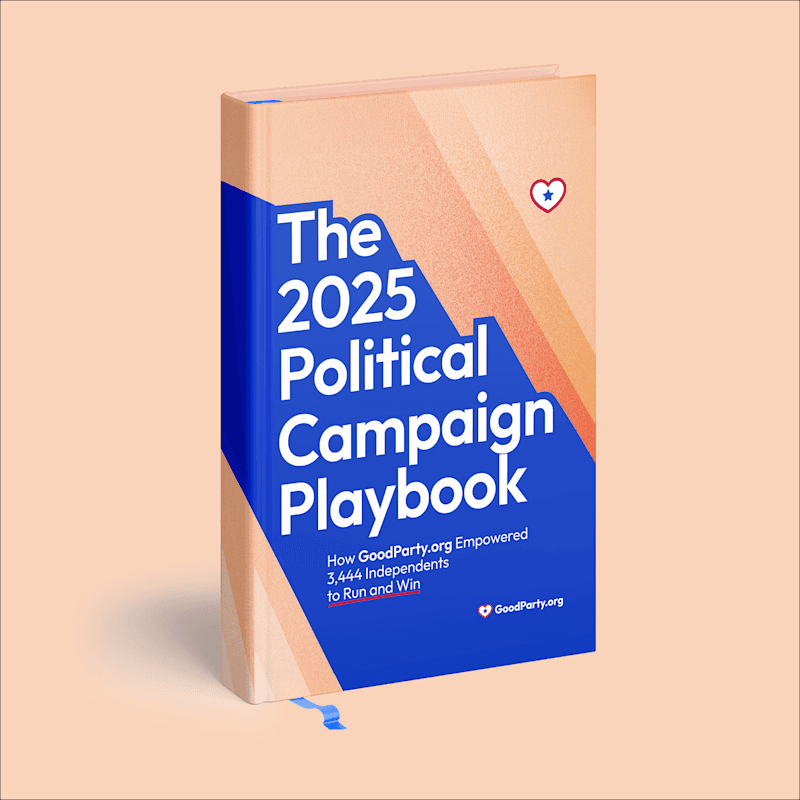
Is Triangulation Bad for Political Campaigning?
When tried and true political tactics seem ineffective, politicians, campaign managers, and political scientists look for new ways to connect with voters. One such tactic is the political strategy of triangulation.
Sometimes referred to as “third-way” neoliberalism, this strategy has been both praised and criticized over the years. As a tactic, it can be used by politicians on either side of the ideological spectrum to draw support from moderates in both parties toward a more centrist policy approach.
While some see it as an effective way to take a more centrist approach to government that appeals to a broader range of voters, others feel that triangulation is why the 21st-century Democrats more closely resemble last century’s pro-corporate Republican party.
Read on as we explore what triangulation is and how it originated, highlight some recent examples, and delve into the pros and cons of using this political maneuver.
Is triangulation a valuable tool for politicians or a dangerous game that threatens the integrity of the political process?
Let’s find out.
What Is Triangulation?
Triangulation is a political strategy where a candidate or political party positions themselves between two opposing ideologies or interest groups to appeal to a broader spectrum of voters. It’s sometimes rationalized as the apex where capitalism and socialism meet, forming a perfect triangle while “transcending” the worst elements of both.
In other words, triangulation is more than just pandering or trying to appeal to “the other side”. It’s more of a concerted, formal strategy that involves taking elements of an ideology or policy issue and triangulating them into a compromise that addresses the concerns of both, making the ideas or policies more palatable to centrists in the establishment parties.
Essentially, it means finding a middle ground between two extremes, with the hope of appealing to a more significant portion of the electorate. A recent example might be the Affordable Care Act, which in its final form was viewed as a compromise between Democrats who wanted some version of universal health care and fiscally conservative Republicans who preferred privatization and wanted to limit the role of the federal government in the name of “State’s Rights.”
The term "triangulation" was popularized by political consultant Dick Morris when he was working on Bill Clinton’s 1996 reelection campaign, and it worked at the time. Bill Clinton was able to appeal to more fiscally conservative members of both parties with his emphasis on tackling urban violence and eliminating dependence on social safety nets.
In fact, the Clinton administration and Tony Blair’s stint as prime minister of the United Kingdom are often characterized by this philosophy.
Origins of Triangulation
Triangulation as a political strategy has roots that extend beyond the term itself. Politicians have always sought ways to broaden their appeal and maximize their chances of winning elections. The trick is to find a way to do it without compromising your principles or pandering.
Under Dick Morris’ guidance, Bill Clinton's campaign took triangulation to an art form.
In an effort to distinguish himself and his party from the perceived liberal elements within the Democratic Party, Clinton embraced centrist policies on issues like welfare reform, crime control, and economic matters. As a political strategy, he neatly positioned himself and the Democratic Party as a moderate alternative to the more liberal policies of the past.
Some would say that this somewhat compromised, centrist approach has pushed both parties further right and is responsible for some of the most harmful policies of our current establishment political system.
Recent Examples of Triangulation
Triangulation remains a common strategy in politics worldwide, and there are several notable examples in recent years:
Joe Biden's Presidential Campaign (2020): In the 2020 U.S. presidential election, Joe Biden positioned himself as a centrist Democrat. He sought to capture support from a broader range of voters, including disaffected Republicans, by focusing on issues like unity, healing the nation, and experience in government. This approach was aimed at differentiating himself from both the more progressive wing of the Democratic Party and the policies of the incumbent, Donald Trump.
Boris Johnson's Leadership of the UK Conservative Party: As leader of the UK Conservative Party and Prime Minister, Boris Johnson has been known to adopt policies and rhetoric that appeal to both traditional Conservative voters and those who voted for Brexit. By attempting to walk a fine line between the more socially conservative and fiscally liberal elements within his party, some would say he ineptly embraced the worst elements of both and did irreparable harm to Great Britain and his own political legacy.
Canadian Prime Minister Justin Trudeau's Approach: Justin Trudeau, leader of the Liberal Party of Canada, has often employed a triangulation strategy. As such, he has been able to appeal to both the progressive and moderate factions within the party while maintaining a centrist image (for a Canadian) on issues such as climate change and the economy.
Impact of Triangulation on Politics
Now that we've examined the origins and some recent examples of triangulation, let's explore its impact on the world of politics, both positive and negative.
Pros of Triangulation:
Appeal to a Broader Base: Triangulation can help politicians reach a more extensive cross-section of voters. By presenting themselves as a moderate or centrist option, they can attract voters from both ends of the political spectrum, potentially increasing their chances of winning.
Pragmatism: Triangulation often requires politicians to find practical, real-world solutions to issues. This can result in more balanced, rational policies that consider a variety of perspectives and interests.
Stability and Consensus: By seeking common ground, triangulation can lead to more stable and less polarized politics. This is particularly valuable in times of crisis or when a divided nation needs unity.
Electability: In a competitive political landscape, being seen as a moderate or centrist candidate can enhance one's electability. This is particularly true in systems where winning over swing voters is crucial.
Cons of Triangulation:
Lack of Conviction: Critics argue that triangulation often leads to a lack of conviction and principle in politics. Politicians can triangulate themselves to the point of simply pandering to voters rather than standing firmly for their beliefs.
Inauthenticity: Some see triangulation as inauthentic and deceptive. Voters may feel betrayed if they perceive a candidate as disingenuous, leading to a loss of trust in the political process.
Missed Opportunities for Real Change: By positioning themselves in the middle, politicians might miss opportunities to push for progress and meaningful change. This can be frustrating for voters who seek transformative policies.
Division within the Party: Triangulation can also create division within a political party. When a candidate or leader is perceived as too centrist, it can alienate the party's more ideologically-driven members.
Ethical Uses of Triangulation for Independent Candidates
For an independent candidate, ethical use of triangulation can be a way to transcend the limitations of a two-party system and appeal to a broader range of voters.
Here are some key considerations:
Aim for authenticity. Independent candidates should aim to present themselves as authentic and principled individuals who genuinely seek to bridge political divides for the benefit of the people. Their message should be one of unity, compromise, and problem-solving rather than opportunism.
Promote transparency. It's crucial for independent candidates to be transparent about their positions, acknowledging that they may not align perfectly with either of the major parties. Transparency builds trust with the electorate and shows a commitment to honest representation.
Focus on real issues. Independent candidates should center their campaigns on issues and policies rather than political labels. By advocating for solutions that resonate with a broad range of voters, they can position themselves as problem-solvers.
Build coalitions and alliances. Building alliances with like-minded individuals and organizations can help independent candidates gain support and credibility. These alliances also demonstrate a commitment to cooperation and consensus-building.
Engage with voters. Independent candidates should actively engage with voters, listening to their concerns and taking a genuinely inclusive approach. This can identify common ground and craft policies that address the needs of a diverse electorate.
Final Thoughts
Like many campaign tactics, triangulation is a strategy that has its pros and cons. While it can be effective for broadening a candidate's appeal and fostering compromise, it also carries risks of appearing inauthentic and alienating party loyalists.
For independent candidates, the ethical use of triangulation can be a tool for transcending the limitations of the two-party system and creating a more inclusive and responsive political landscape. The key lies in authenticity, transparency, issue-focus, and engagement with the electorate.`
Get No-Compromise Assistance With Your Political Campaign
While independents need every bit of help they can get to gain a competitive edge during election season, they needn’t compromise their principles to run a successful, engaging campaign.
Ethically incorporating some of the tactics of triangulation can help you reach a wider base of support. But, running an effective campaign takes more than just a strategy or two.
That’s why GoodParty.org is proud to offer independent candidates with all levels of political savvy some expert advice and guidance. Our campaign tools provide indie candidates with provable strategies and comprehensive campaign planning assistance without all the unnecessary BS.
Best of all, they’re free!

